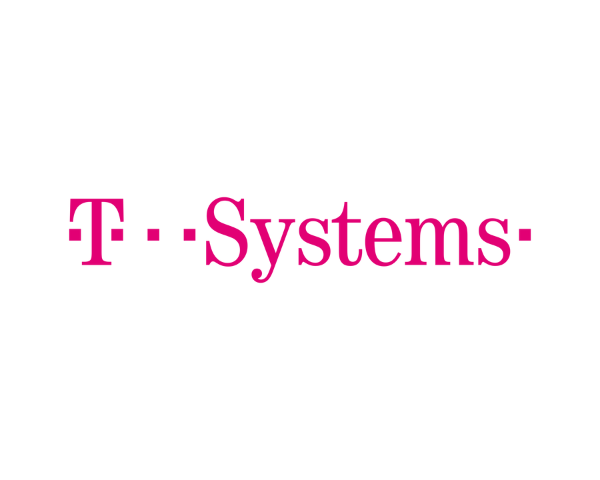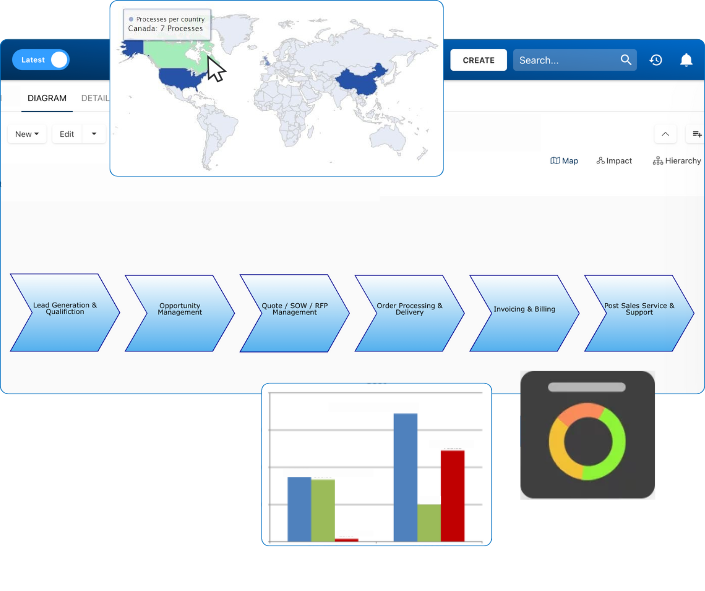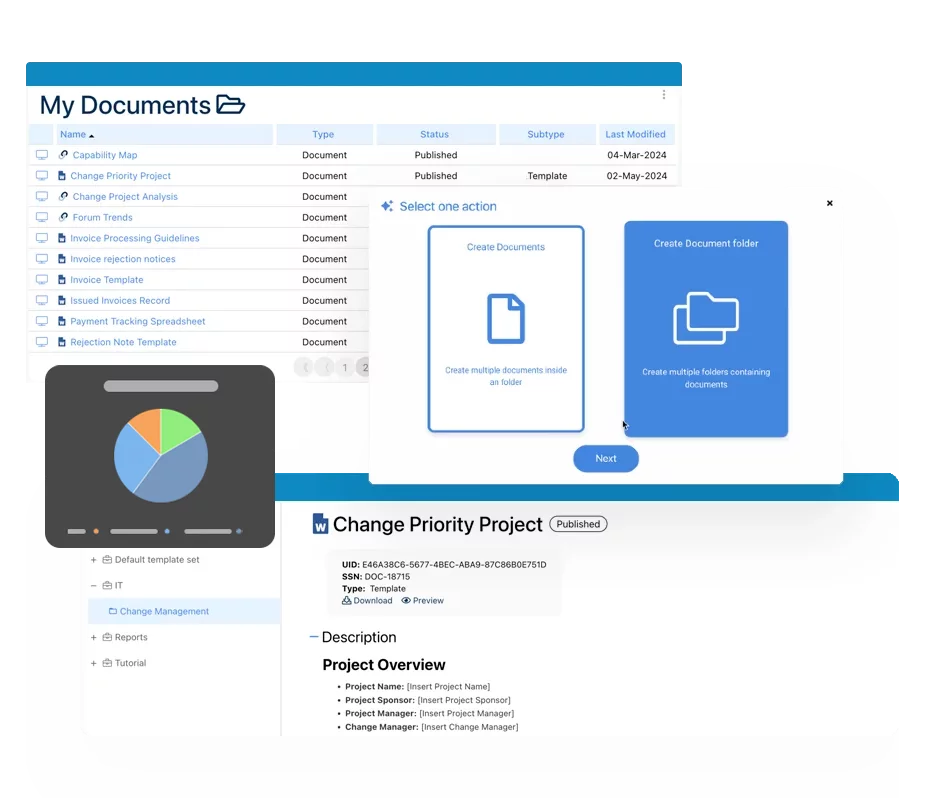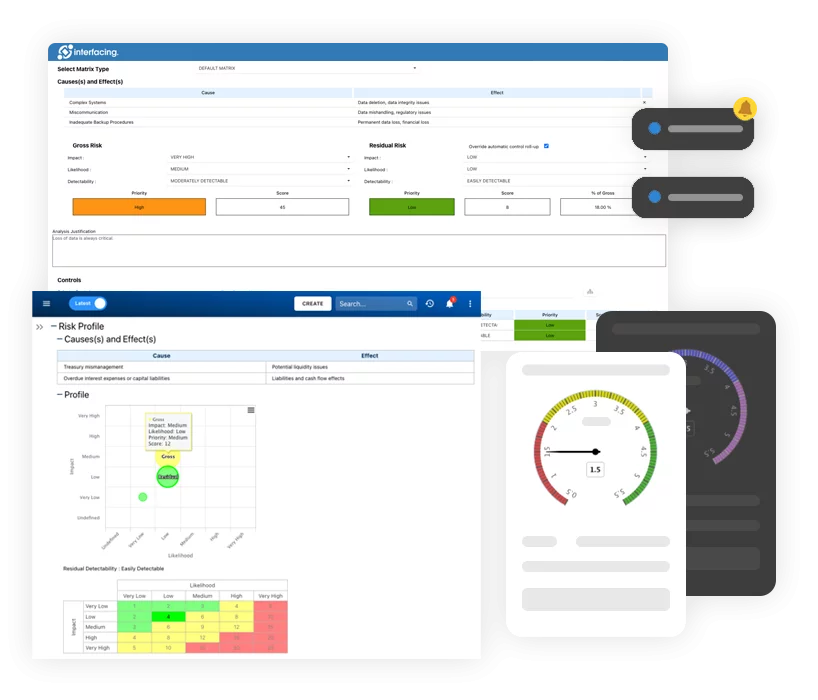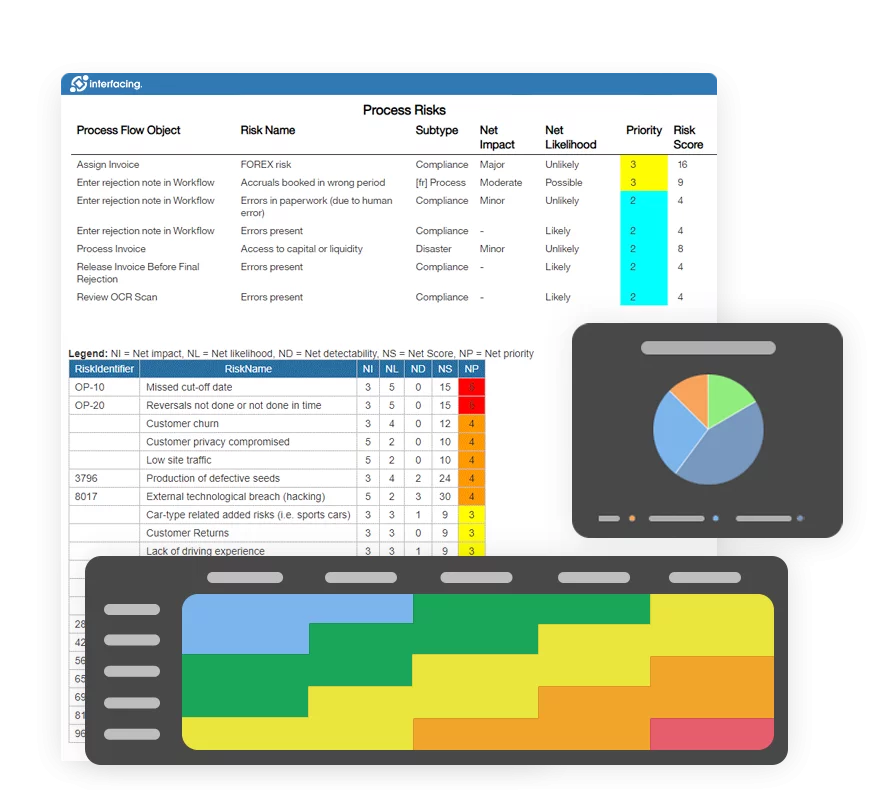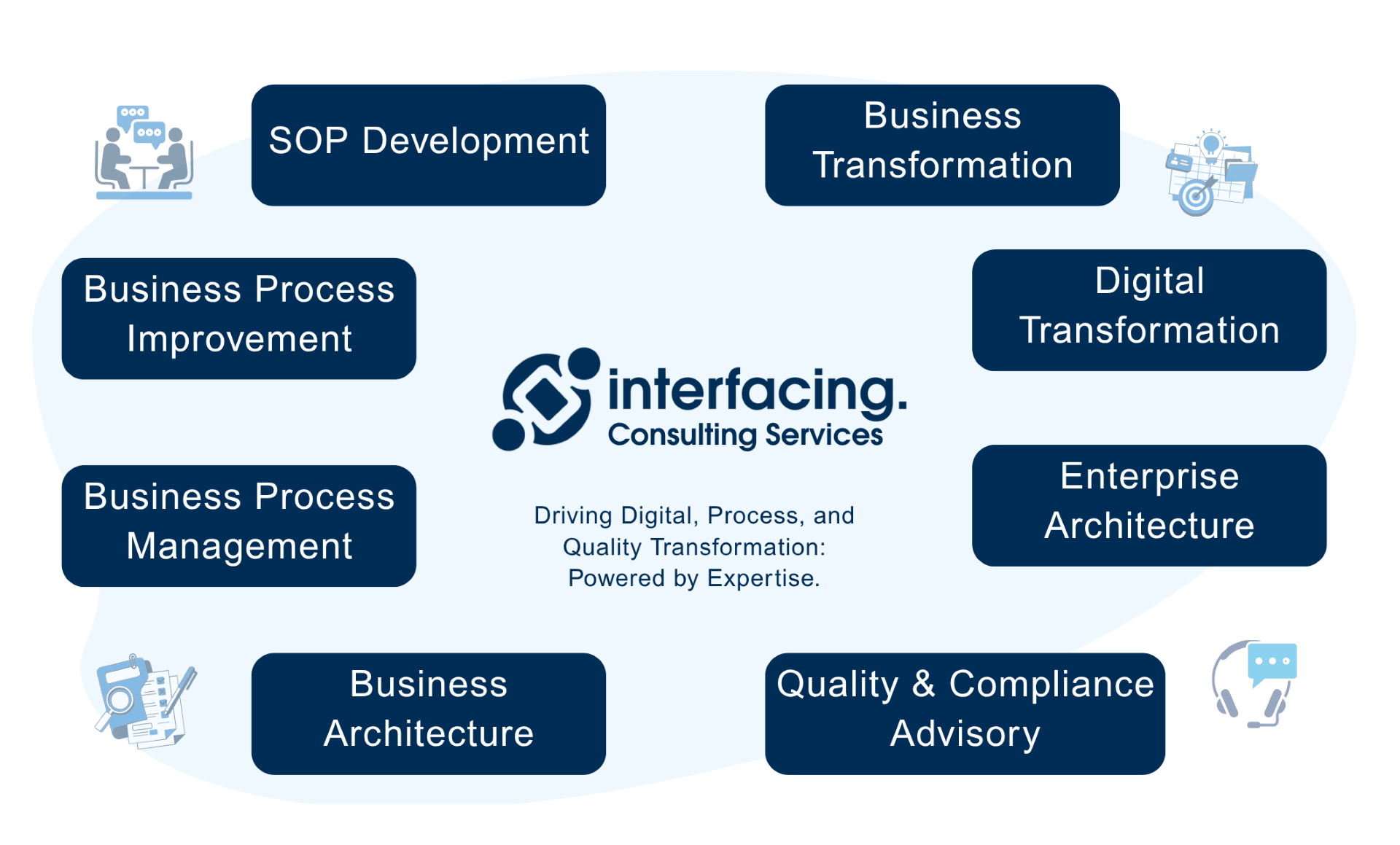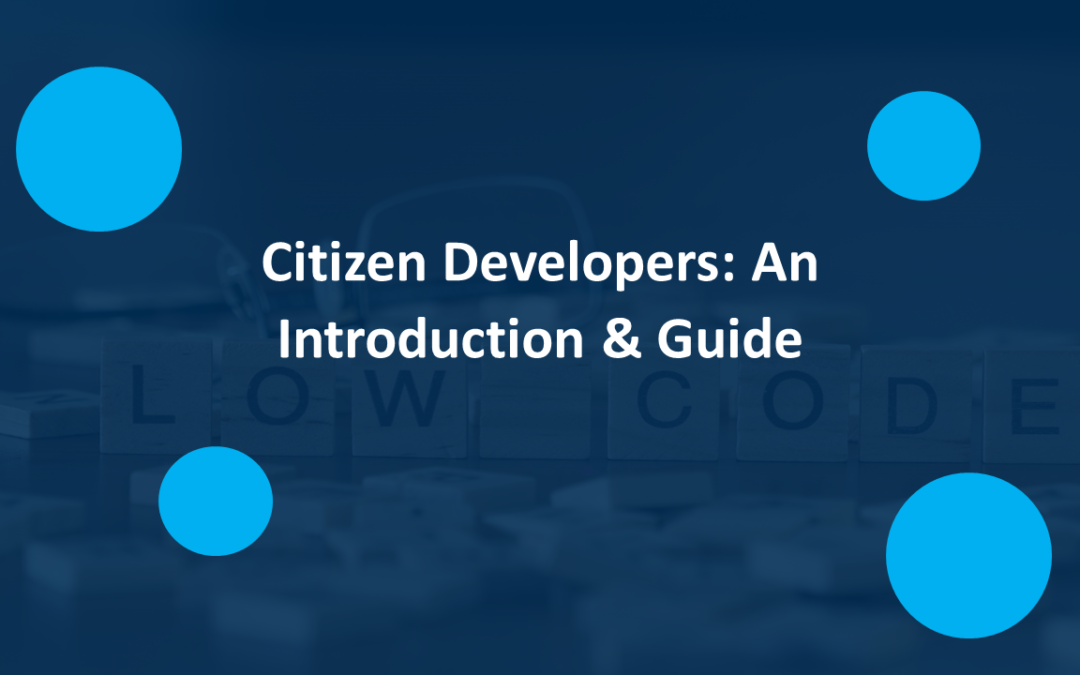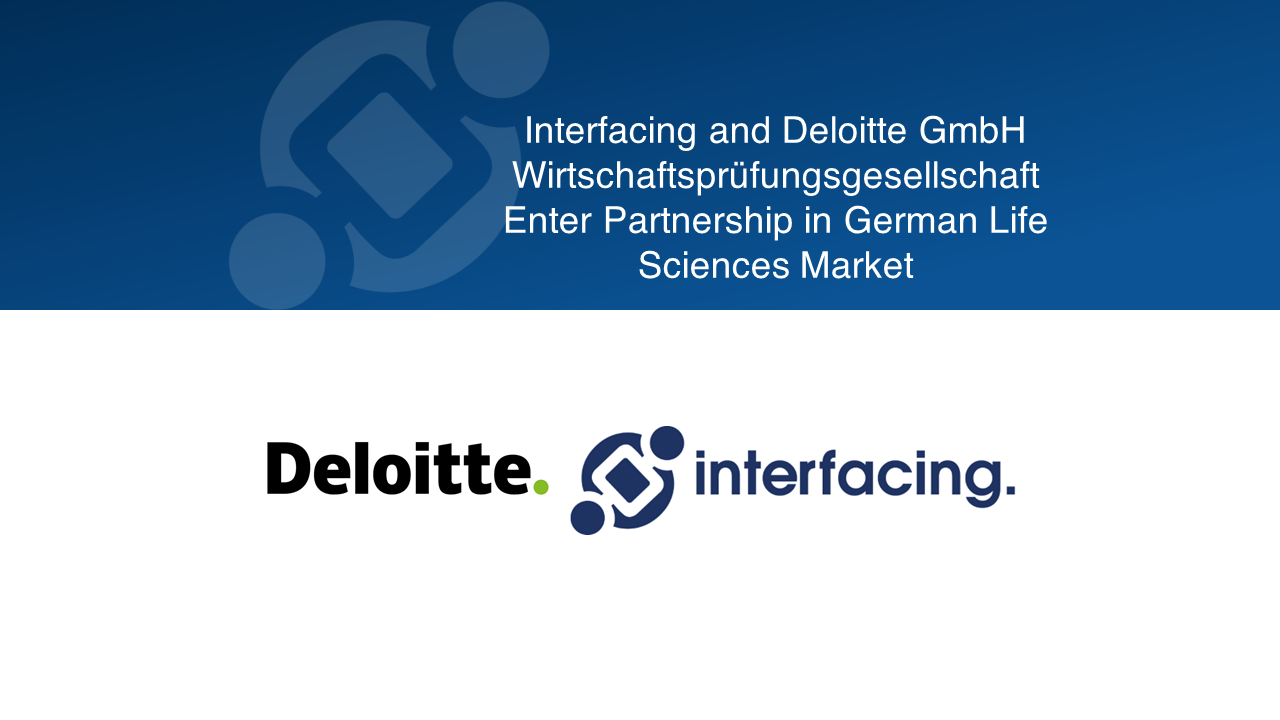A Guide to Citizen Developer Meaning and Definition
Empowering everyday users or “citizen developers” to build simple to complex applications in weeks, not months.
Across global markets and nearly all industry verticals, there is an increasing need for software developers estimated to surpass 500,000 positions by 2024, according to “How to Harness Citizen Developers, Forrester Research, Inc.” This demand for software needs far exceeds what traditional Java or .NET developers can do to keep up the pace.
With IT departments focusing on maintaining their network environments, other areas of business, for example, sales, marketing, customer service, and field services or operations, are left looking outside of IT to meet their needs.
Not all is bleak, though, as there is a positive solution already available today. Enter the skyrocketing rise in low- and no-code application development. These platforms have given organizations the ability to effortlessly create customized IT solutions without manual coding, leaving all of us now in the position to become Citizen Developers.
Who can be a Citizen Developer?
Simply put, any user who builds applications, ensuring smooth operations of any or all business processes while following IT’s development guidelines, would be considered a Citizen Developer. These users most likely have not had formal training in programming, and developing applications even, may not actually be part of their job description.
You may be working alongside one already, hearing how they have been experimenting with their Excel sheets, improving processes along the way. This person may be a business analyst with a keen interest in developing tools to help grow the business. It can often be digitally native Millennials who trend toward quick adoption of new technologies that are likely found among citizen developer profiles.
The Forrester research noted earlier broke down Citizen Developers into three profiles, with each supporting the business in differing ways.
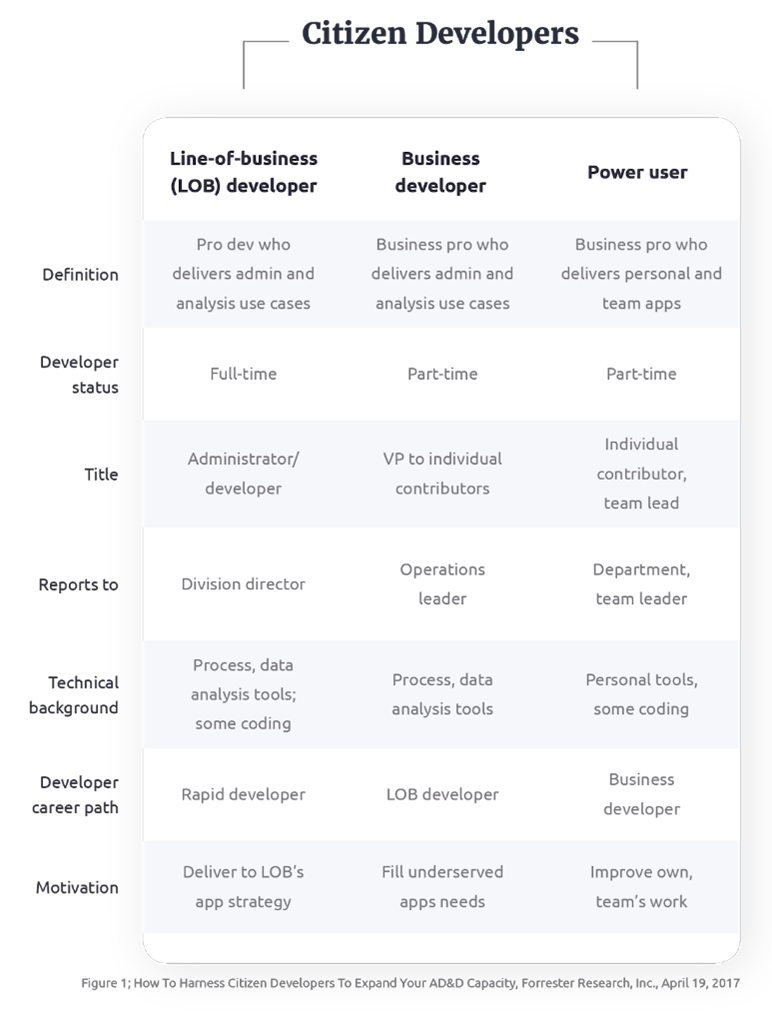
Citizen Development: Making the case
Increasing pressure on businesses ‘ ability to meet technology goals across the organization is evident when doing a deep dive into productivity. Long IT backlogs, a need to focus on small tasks to meet short-term goals instead of responding to business goals instead of a lack of productivity due to continuously shifting priorities. It can be said that the best case to make for citizen developers is that they will alleviate the massive pressure of stagnation by serving one of the critical needs in the triple constraint; shortened scheduling, as there is now a vastly greater supply of resources. This is only accomplished by utilizing low-code or no-code platforms that will bring rapid application developments’ potential to reality.
Aside from the apparent advantage Citizen Developers bring to programming, there are other benefits that can be noted:
- Instant Support
- They give instant support to a company looking to react to change by driving digital transformation efficiently. Citizen Developers are able to help further automate and digitize systems by contributing to or integrating with existing applications.
- Putting the “rapid” in rapid application development
- Business demand for applications and solutions to be put in place using visual modeling quickly, smoothly, and effectively in a matter of days or weeks, not months.
- Citizen Developers build on business and IT alignment
- They are the bridge in the gap between interests that may deviate over time. Citizen Developers have the benefit of combining business and technology acumen and skills when developing applications that have direct business goals in mind. They tend to collaborate closely with IT when bringing ideas to fruition.
- Adding great value
- Over time, Citizen Developers will become more valuable to the organization as their skills continue to grow more advanced. They will be able to deliver greater business value by honing their development skills through the experience gained.
- Citizen developers are increasingly becoming the Nexis to Business innovation
- Organizations that have traditionally relied on IT or external application providers for new products to meet current or future needs have little time to spend devoted to innovation. By introducing low-code platforms to business, Citizen Developers are making great strides in innovation as they have the opportunity to explore this aspect of the process to provide unique and inventive solutions and business models to serve better the organizations needs and the needs of current and potential customers.
Contributions made: Looking at applications built by Citizen Developers
By using low-code platforms, Citizen Developers are able to build from facing applications such as mobile or web and back-office applications to support the business.
A significant development area has been in reporting and administrative apps that have been integrated within enterprise organizations. These applications run on spreadsheets or databases that also include data-tracking or workflow, or administrative apps.
It is easy for Citizen Developers to step up to the task given their coordination with a centralized IT’s monitoring environment.
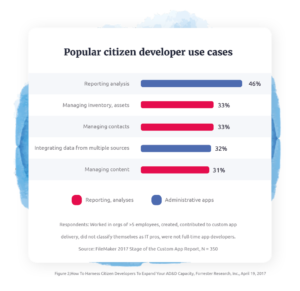
Given IT’s responsibilities to maintain systems uptime to be 100% of the time optimally, they do not have the resources to devote to creating new reporting or administrative applications. This backlog can be quite large in some organizations and would never see the light of day without the involvement of Citizen Developers in the software life-cycle. Contribution from elsewhere in the business, leveraging added skills and business expertise, effectively lend to faster innovation and help speed digital transformation company-wide.
Addressing the Shadow IT Scenario.
To state the obvious here, Citizen Developers are not a replacement for IT departments or professional programmers. They should not be seen as contributors to “shadow IT” either (this describes the presence of non-approved applications running on the network outside of the control of the IT department). In short, Citizen Developers’ role is to lessen the burden that IT has in its development backlogs to allow IT to focus on the bigger picture of more complicated and complex tasks.
As such, precautions will still need to be taken to keep Citizen Developers from creating more shadow IT. They will need to follow IT’s guidelines to avoid security risks, integrate smoothly with existing systems, and allow for relatively easy implementation and updates, to name a few.
To accomplish this, the IT department will need to provide a secure and controlled environment for Citizen Developers to explore application development. This gives Citizen Developers the space needed to start building their solution until it is an MVP (minimum viable product). Depending on the project, the handover to IT to finish and maintain the application would occur around this stage.
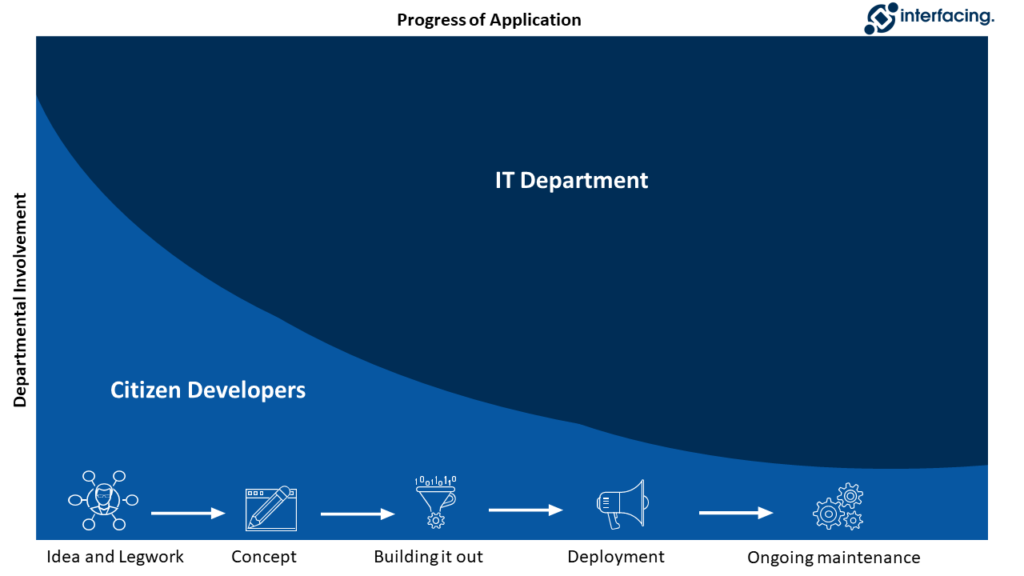
Managing Citizen Developers: Keeping shadow IT at bay
Collaboration
Active collaboration can mean working with Citizen Developers by delegating administrative or reporting apps as an example. IT should also be involved with overseeing the projects to keep shadow IT away from creeping into the environment. On the one hand, IT is promoting security and control, while on the other hand, Citizen Developers are able to learn from traditional developers, whether directly or indirectly.
Mentoring and Training
For the most part, Citizen Developers are tech-savvy and self-motivated to learn more by nature. While this is critical to what makes them great, they will still need guidance. Mentoring and training help Citizen Developers hone current skills and gain new skill sets, which result in gaining more confidence and learning new techniques to accomplish the same outcome better. The more professional development given, the greater your Citizen Developers are equipped and able to align with IT’s expertise and the company’s goals.
Ongoing Support
Maintaining a Citizen Development program will only succeed if CIO’s and IT managers throughout the organization promote the movement. Once an organization’s culture supports Citizen Developers, it will continue to provide constant adaption, innovation, and improvements in all low-code, no-code rapid application development projects. With this awareness, large enterprise organizations can quickly adapt to any changes and respond to new opportunities to bring growth to the business. Formalized policies should be set for Citizen Developers to maintain a clean IT landscape overall. Citizen Developers can and will, with proper guidance, become an essential contributor to an effective and successful IT strategy
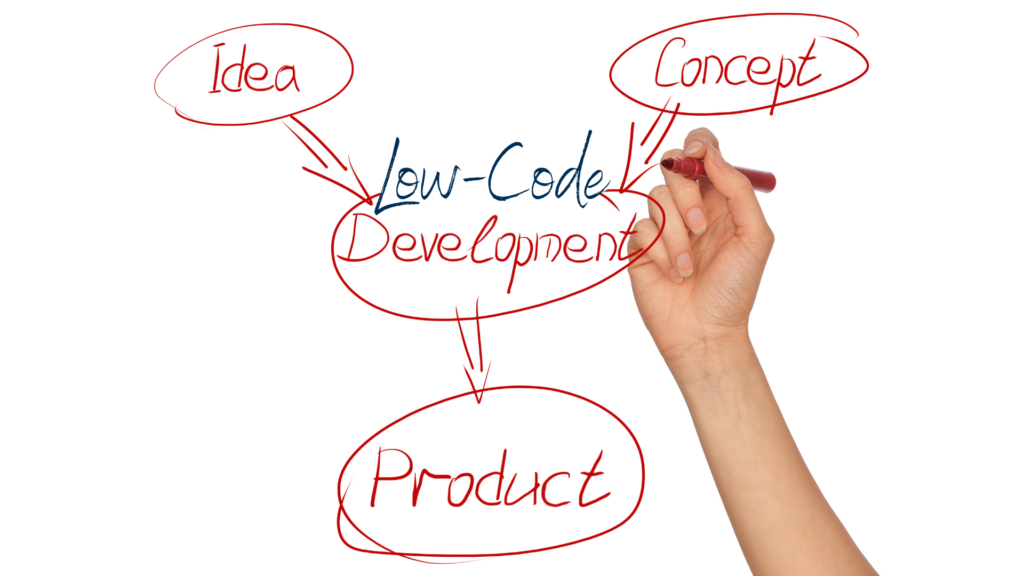
Final Thoughts
On a side note, there is a bit of overlap between Citizen Developers and DevOps. For obvious reasons, namely agility and faster development to market, embracing Citizen Developers will also mean your DevOps culture will gain momentum in breaking down traditional corporate silos. Things will get done through greater collaboration across previously disparate teams and functional areas.
Citizen Developers are here to stay and in keeping with this movement, Enterprise IT will eventually need to harness and leverage the new, plentiful and admittingly robust user-base responsible for at least 30% of new applications to be built with greater effectiveness accuracy and efficiency.
Why Choose Interfacing?
With over two decades of AI, Quality, Process, and Compliance software expertise, Interfacing continues to be a leader in the industry. To-date, it has served over 500+ world-class enterprises and management consulting firms from all industries and sectors. We continue to provide digital, cloud & AI solutions that enable organizations to enhance, control and streamline their processes while easing the burden of regulatory compliance and quality management programs.
To explore further or discuss how Interfacing can assist your organization, please complete the form below.

Documentation: Driving Transformation, Governance and Control
• Gain real-time, comprehensive insights into your operations.
• Improve governance, efficiency, and compliance.
• Ensure seamless alignment with regulatory standards.

eQMS: Automating Quality & Compliance Workflows & Reporting
• Simplify quality management with automated workflows and monitoring.
• Streamline CAPA, supplier audits, training and related workflows.
• Turn documentation into actionable insights for Quality 4.0

Low-Code Rapid Application Development: Accelerating Digital Transformation
• Build custom, scalable applications swiftly
• Reducing development time and cost
• Adapt faster and stay agile in the face of
evolving customer and business needs.
AI to Transform your Business!
The AI-powered tools are designed to streamline operations, enhance compliance, and drive sustainable growth. Check out how AI can:
• Respond to employee inquiries
• Transform videos into processes
• Assess regulatory impact & process improvements
• Generate forms, processes, risks, regulations, KPIs & more
• Parse regulatory standards into requirements

Request Free Demo
Document, analyze, improve, digitize and monitor your business processes, risks, regulatory requirements and performance indicators within Interfacing’s Digital Twin integrated management system the Enterprise Process Center®!
Trusted by Customers Worldwide!
More than 400+ world-class enterprises and management consulting firms
























